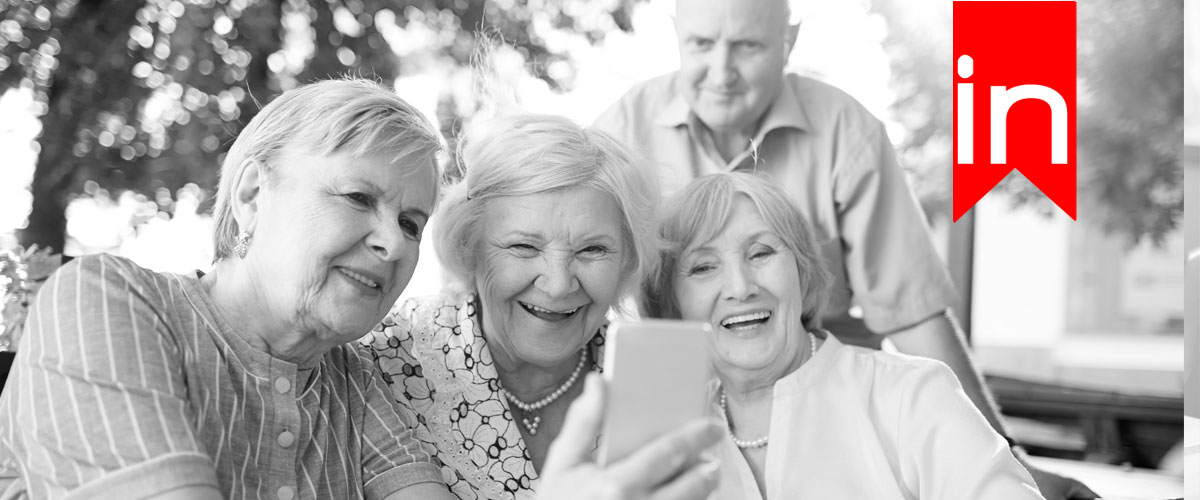Heat stroke is a serious and potentially life-threatening condition that can affect people of all ages, but seniors are particularly vulnerable. As we age, our body’s ability to regulate temperature decreases, and certain medications or existing health conditions can further compromise this regulatory function. Recognizing in order to take prompt and appropriate action.
It is important for seniors, as well as their caregivers and loved ones, to be aware of the signs of heat stroke. Early symptoms can include dizziness, headache, and rapid heartbeat. As the condition progresses, disorientation, confusion, and even unconsciousness may occur. Identifying these symptoms early can help prevent more severe complications, such as organ damage or death.
Seniors should take preventive measures during hot weather to minimize the risk of heat stroke, such as staying hydrated, avoiding direct sunlight during peak hours, and wearing light-colored, loose-fitting clothing. However, if symptoms of heat stroke are observed, acting quickly and seeking immediate medical attention is essential to ensure the best possible outcome.
Heat Stroke: An Overview
Heat stroke is a severe heat-related illness that occurs when a person’s body temperature rises to dangerous levels, typically above 104°F (40°C). This condition is the result of prolonged exposure to high temperatures or prolonged physical activity in hot environments, leading to the body’s inability to regulate its temperature.
Seniors are especially at risk for heat stroke because their bodies may not efficiently regulate temperature as they age. Compounding factors, such as certain medications, chronic illnesses, and reduced mobility, further increase the likelihood of seniors experiencing heat stroke.
Recognizing the symptoms of heat stroke in seniors is crucial in providing timely treatment and preventing complications. These symptoms may include:
- High body temperature
- Red or hot, dry skin
- Rapid, strong pulse
- Headache
- Dizziness or fainting
- Nausea or vomiting
- Confusion or altered mental state
- Seizures
Preventative measures can significantly reduce the risk of heat stroke, especially for at-risk populations such as seniors. Some preventative measures include:
- Staying hydrated by drinking plenty of water and avoiding excessive caffeine or alcohol consumption
- Wearing lightweight, loose-fitting, and light-colored clothing
- Spending time in air-conditioned environments during hot days
- Taking cool showers or baths to lower body temperature
- Avoiding direct sunlight and strenuous activities during the hottest parts of the day
Symptoms of Heat Stroke
General Symptoms
Heat strokes can occur when the body is unable to regulate its core temperature. Maintaining a normal body temperature is vital for proper bodily functions. When exposed to excessive heat, an individual’s core temperature may rise, leading to heat stroke. General symptoms include:
- High body temperature (104°F/40°C or above)
- Flushed, red skin
- Rapid, shallow breathing
- Increased heart rate
- Sweating that may become absent as the heat stroke progresses
- Nausea and vomiting
- Headache and dizziness
- Confusion and irritability
- Fainting or loss of consciousness
Specific Symptoms for Seniors
Seniors may experience unique symptoms due to age-related factors, making them more susceptible to heat stroke. These specific symptoms include:
- Dehydration, as seniors may not feel thirst as efficiently as younger people
- Lower tolerance for heat, owing to a slower physiological response to temperature changes
- Possibly taking medications that affect their body’s ability to regulate temperature or retain water
It is crucial for seniors and their caregivers to monitor for heat stroke signs and seek medical attention as soon as the symptoms are noted. Taking preventive measures, such as staying hydrated and avoiding overheating, can reduce the risk of heat stroke among this vulnerable population.
Causes and Risk Factors
Heat stroke is a serious medical condition that is more common in seniors due to various predisposing factors. It is essential to understand the causes and risk factors to take preventive measures and safeguard older individuals from harm. This section will explore environmental and health factors that may contribute to heat stroke in seniors.
Environmental Factors
Some environmental elements raise the risk of heat stroke for seniors, such as:
- High temperatures: Prolonged exposure to high temperatures can cause the body to overheat, leading to heat stroke.
- High humidity: High humidity levels can prevent sweat from evaporating and cooling down the body efficiently, making seniors more susceptible to heat stroke.
- Lack of air conditioning or ventilation: Inadequate cooling or air circulation in living spaces may create an unsafe environment for older adults.
- Intense or extended exposure to sunlight: Prolonged exposure to the sun’s rays might impair the body’s ability to regulate temperature effectively, increasing the risk of heat stroke.
Health Factors
Various health factors may also increase the risk of heat stroke in older adults, such as:
- Chronic illnesses: Certain conditions such as heart disease, lung disease, or kidney disorders can affect the body’s ability to regulate temperature and increase the risk of heat stroke.
- Dehydration: Seniors are more prone to dehydration due to various reasons, including reduced thirst sensation and diminished kidney function. Dehydration can impair the body’s cooling mechanism, increasing the risk of heat stroke.
- Medications: Some medications, like diuretics, antipsychotics, and beta-blockers might affect the body’s temperature regulation, making seniors more susceptible to heat stroke.
- Obesity: Excess body fat can hinder heat exchange and decrease the body’s ability to cool itself efficiently, leading to a higher risk of heat stroke.
- Alcohol or drug use: Substance use might impede the body’s ability to regulate temperature, increasing the risk of heat stroke in seniors.
- Reduced mobility: Older individuals with limited mobility may struggle to cool down by changing their environment or clothes, making them more vulnerable to heat stroke.
Understanding Seniors’ Vulnerability
Seniors may face a higher risk of heat stroke due to several factors that make them more vulnerable to extreme temperatures. It’s crucial to comprehend these factors to provide better care and protection for the elderly.
An essential factor that increases vulnerability is the diminished ability of an older person’s body to regulate temperature. With age, the sweat glands, responsible for cooling down the body, become less efficient leading to a reduced ability to dissipate heat. Furthermore, seniors might not feel thirsty even when their body needs hydration, leading to dehydration exacerbating the effects of high temperatures.
Additionally, chronic medical conditions like diabetes, heart, and kidney diseases could hinder the body’s ability to respond to heat. Some medications prescribed for these conditions may also impair the body’s temperature regulation or affect hydration levels.
Living conditions and social factors play a significant role as well. Seniors living alone may not have access to air conditioning, leading to a dangerous indoor temperature. A lack of regular social contact might mean that they have nobody to check on them during a heatwave, making them more susceptible to heat stroke.
In order to recognize the early signs of heat stroke in seniors, it’s essential to be aware of these vulnerabilities. Taking preventative measures such as ensuring proper hydration, providing access to cool environments, and regular check-ins can help reduce the risk and keep them safe during extreme temperatures.
Preventing Heat Stroke in Seniors
Heat stroke is a serious condition that can have severe consequences, particularly for seniors. There are several steps that can be taken to prevent heat stroke in elderly individuals, including adapting the home environment, ensuring proper hydration and diet, and tapping into community resources.
Adapting Home Environment
One of the essential aspects of preventing heat stroke in seniors is ensuring their living space is cool and comfortable. This can be achieved through:
- Installing air conditioning or ensuring it is functioning properly
- Using fans to promote air circulation
- Blocking sunlight with shades, curtains, or blinds
- Insulating the home to maintain a consistent temperature
Additionally, it is important to regularly check the temperature indoors, especially during heatwaves, and take appropriate measures to keep it at a safe level.
Proper Hydration and Diet
Dehydration can increase the risk of heat stroke in seniors. To avoid this, seniors should:
- Drink plenty of water throughout the day, even if they do not feel thirsty
- Avoid caffeinated and alcoholic beverages, which can contribute to dehydration
- Eat water-rich fruits and vegetables to help maintain hydration levels
Seniors should also ensure their diet is balanced and full of essential nutrients to support overall health and wellbeing.
Community Resources
Local communities may offer resources to help seniors cope with extreme heat, such as:
- Designated cooling centers where seniors can escape the heat during extreme temperatures
- Heat safety education programs
- Transportation services to help seniors access cooling centers and other essential services
Seniors should be encouraged to take advantage of these resources as appropriate and remain connected with their community, friends, and family to ensure they receive the support they need during hot weather conditions.
Treatment and First Aid
Dealing with heat stroke in seniors is crucial to minimize the risk of severe consequences. This section will focus on the steps for treatment and first aid, divided into immediate actions and assessment, followed by professional care and support.
Immediate Actions and Assessment
When a senior shows signs of heat stroke, quick action is essential. Follow these steps:
- Move the person to a cooler place: Get the individual out of the sun and into an air-conditioned room or shaded area.
- Position the person lying down: Elevate their feet slightly.
- Hydrate: Encourage the person to drink cool water or other non-alcoholic, caffeine-free beverages.
- Cool the body: Apply cold packs or ice wrapped in a cloth to the neck, armpits, and groin. Use a fan, sponge, or spray bottle filled with cool water to keep the skin moist.
- Monitor the person’s condition: Track changes in their symptoms and seek medical help if no improvement is seen.
Professional Care and Support
In some cases, professional medical assistance may be necessary to ensure the senior’s safety and recovery from heat stroke. After the initial first aid, it is important to:
- Seek medical help: If symptoms persist or worsen, call for emergency medical assistance immediately.
- Follow prescribed treatment: The healthcare provider may recommend in-patient or out-patient care, depending on the severity of the heat stroke. Follow their directions closely.
- Monitor recovery: Keep an eye on the person’s progress during their recovery period, and assist with any prescribed medications or recommended lifestyle changes.
- Prevent future incidents: Educate the senior and their caregivers on precautions to take and warning signs to monitor during hot weather.
Effective treatment and first aid for heat stroke in seniors can reduce risks and promote a faster recovery. Early intervention combined with professional care will ensure the well-being of the affected individual.
Final Note
As seniors are more vulnerable to heat stroke, it is crucial to be aware of the symptoms and take necessary precautions. Early recognition and timely intervention can help prevent serious complications or even death.
Some key symptoms in seniors include high body temperature, confusion, weakness, nausea, and rapid heartbeat. In addition, seniors may experience unique symptoms, such as fainting or symptoms related to pre-existing medical conditions. It is essential to monitor elderly individuals closely when they are exposed to hot environments, especially if they are experiencing any of these symptoms.
Preventive measures involve staying hydrated, avoiding direct sun exposure during peak hours, wearing loose and light-colored clothing, and using air conditioning or fans to stay cool. It is also important to educate caregivers and family members about recognizing and responding to these symptoms, as they may be the first to notice any issues.
Being informed about heat stroke symptoms in seniors and taking the necessary precautions can greatly reduce the risk and ensure the health and well-being of older individuals during hot weather.



2 thoughts on “Heat Stroke Symptoms: Identifying and Preventing Risks in the Elderly”